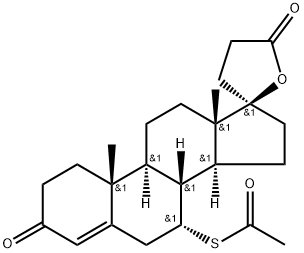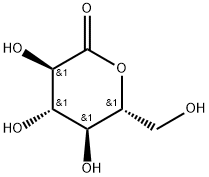6-Pentyl-2H-pyran-2-one
Synonym(s):5-Hydroxy-2,4-decadienoic acid γ-lactone
- CAS NO.:27593-23-3
- Empirical Formula: C10H14O2
- Molecular Weight: 166.22
- MDL number: MFCD00047551
- EINECS: 248-552-3
- SAFETY DATA SHEET (SDS)
- Update Date: 2024-12-18 14:15:32

What is 6-Pentyl-2H-pyran-2-one?
Description
5-Hydroxy-2,4-decadienoic acid δ-lactone has a mushroom, bleu cheese lactone or dairy odor.
Chemical properties
5-Hydroxy-2,4-decadienoic acid δ-lactone has a mushroom, blue cheese lactone or dairy odor
Occurrence
Reported found in peach, grilled beef, fresh plum and nectarine
The Uses of 6-Pentyl-2H-pyran-2-one
6-Pentyl-2-pyrone is an antifungal compound found in Trichoderma harzianum and may be important for cellular regulatory functions.
Definition
ChEBI: 6-n-Pentyl-alpha-pyrone is a member of 2-pyranones. It has a role as a metabolite.
Aroma threshold values
Detection: 150 ppb
Taste threshold values
Taste characteristics at 30 ppm: sweet creamy, coconut, mushroom and nutty.
Synthesis Reference(s)
The Journal of Organic Chemistry, 67, p. 3941, 2002 DOI: 10.1021/jo025518v
General Description
6-Amyl-α-pyrone occurs naturally in peaches. It is also the main volatile organic compound produced by Trichoderma species.
Properties of 6-Pentyl-2H-pyran-2-one
| Melting point: | >230 C |
| Boiling point: | 93 °C / 0.3mmHg |
| Density | 1.004 g/mL at 25 °C(lit.) |
| refractive index | n |
| FEMA | 3696 | 5-HYDROXY-2,4-DECADIENOIC ACID DELTA-LACTONE |
| Flash point: | >230 °F |
| form | clear liquid |
| color | Colorless to Brown |
| Odor | at 1.00 % in dipropylene glycol. tonka lactonic coconut creamy fatty waxy |
| JECFA Number | 245 |
| CAS DataBase Reference | 27593-23-3(CAS DataBase Reference) |
| NIST Chemistry Reference | 2H-pyran-2-one, 6-pentyl-(27593-23-3) |
| EPA Substance Registry System | 2H-Pyran-2-one, 6-pentyl- (27593-23-3) |
Safety information for 6-Pentyl-2H-pyran-2-one
| Signal word | Warning |
| Pictogram(s) |
 Exclamation Mark Irritant GHS07 |
| GHS Hazard Statements |
H315:Skin corrosion/irritation H319:Serious eye damage/eye irritation H335:Specific target organ toxicity, single exposure;Respiratory tract irritation |
| Precautionary Statement Codes |
P261:Avoid breathing dust/fume/gas/mist/vapours/spray. P264:Wash hands thoroughly after handling. P264:Wash skin thouroughly after handling. P271:Use only outdoors or in a well-ventilated area. P280:Wear protective gloves/protective clothing/eye protection/face protection. P302+P352:IF ON SKIN: wash with plenty of soap and water. P305+P351+P338:IF IN EYES: Rinse cautiously with water for several minutes. Remove contact lenses, if present and easy to do. Continuerinsing. |
Computed Descriptors for 6-Pentyl-2H-pyran-2-one
New Products
Tert-butyl bis(2-chloroethyl)carbamate 4-Methylphenylacetic acid N-Boc-D-alaninol N-BOC-D/L-ALANINOL N-octanoyl benzotriazole 3-Morpholino-1-(4-nitrophenyl)-5,6-dihydropyridin- 2(1H)-one Furan-2,5-Dicarboxylic Acid DIETHYL AMINOMALONATE HYDROCHLORIDE 1,1’-CARBONYLDIIMIDAZOLE R-2-BENZYLOXY PROPIONIC ACID 1,1’-CARBONYLDI (1,2-4 TRIAZOLE) N-METHYL INDAZOLE-3-CARBOXYLIC ACID (2-Hydroxyphenyl)acetonitrile 4-Bromopyrazole 5-BROMO-2CYANO PYRIDINE 5,6-Dimethoxyindanone 5-broMo-2-chloro-N-cyclopentylpyriMidin-4-aMine 2-(Cyanocyclohexyl)acetic acid 4-methoxy-3,5-dinitropyridine 1-(4-(aminomethyl)benzyl)urea hydrochloride 2-aminopropyl benzoate hydrochloride diethyl 2-(2-((tertbutoxycarbonyl)amino) ethyl)malonate tert-butyl 4- (ureidomethyl)benzylcarbamate Ethyl-2-chloro((4-methoxyphenyl)hydrazono)acetateRelated products of tetrahydrofuran








You may like
-
 6-Amyl-2-pyrone CAS 27593-23-3View Details
6-Amyl-2-pyrone CAS 27593-23-3View Details
27593-23-3 -
 6-Amyl-α-pyrone CAS 27593-23-3View Details
6-Amyl-α-pyrone CAS 27593-23-3View Details
27593-23-3 -
 1975-50-4 98%View Details
1975-50-4 98%View Details
1975-50-4 -
 2-HYDROXY BENZYL ALCOHOL 98%View Details
2-HYDROXY BENZYL ALCOHOL 98%View Details
90-01-7 -
 2-Chloro-1,3-Bis(Dimethylamino)Trimethinium Hexafluorophosphate 221615-75-4 98%View Details
2-Chloro-1,3-Bis(Dimethylamino)Trimethinium Hexafluorophosphate 221615-75-4 98%View Details
221615-75-4 -
 14714-50-2 (2-Hydroxyphenyl)acetonitrile 98+View Details
14714-50-2 (2-Hydroxyphenyl)acetonitrile 98+View Details
14714-50-2 -
 118753-70-1 98+View Details
118753-70-1 98+View Details
118753-70-1 -
 733039-20-8 5-broMo-2-chloro-N-cyclopentylpyriMidin-4-aMine 98+View Details
733039-20-8 5-broMo-2-chloro-N-cyclopentylpyriMidin-4-aMine 98+View Details
733039-20-8